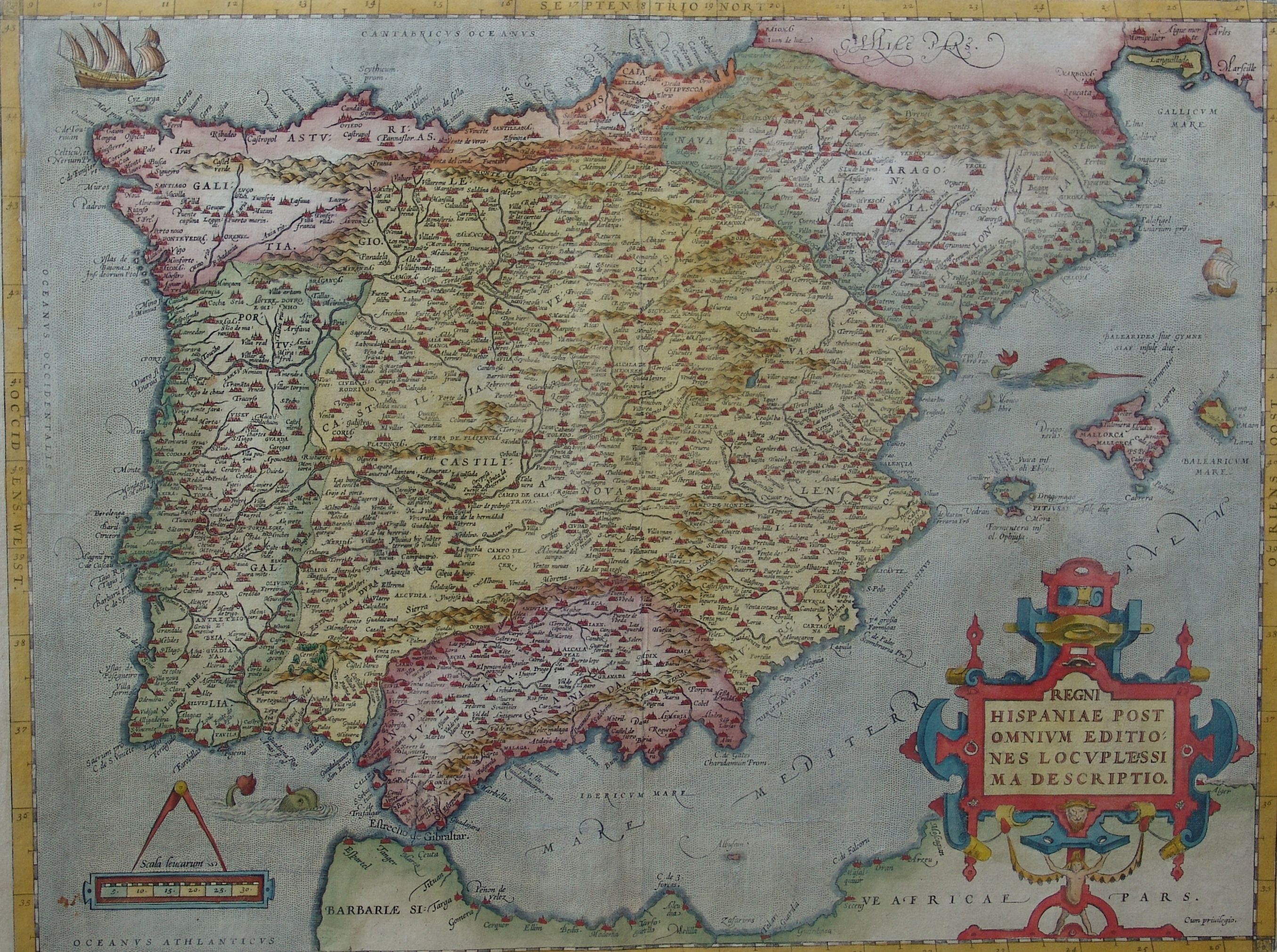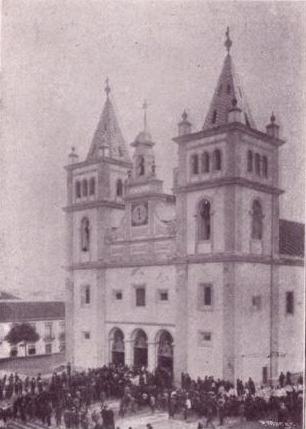|
Santa Luzia (Angra Do Heroísmo)
Santa Luzia (Portuguese for Saint Lucy) is a parish in the municipality of Angra do Heroísmo on the island of Terceira, in the Azores. The population in 2011 was 2,755, in an area of 1.26 km². It is the smallest parish in Angra do Heroísmo. Part of its territory integrates the historical center of the city of Angra do Heroísmo classified as UNESCO World Heritage. Its built heritage includes the monument Memória a D. Pedro IV, the mansion Madre de Deus, the Church of Santa Luzia and Angra do Heroísmo Cultural and Congress Center. History Of the five civil parishes that constitute the urban area of Angra do Heroísmo, Santa Luzia is the most recent, founded in the first years of the Iberian Union (on 18 August 1595). It was Bishop Manuel de Gouveia (then bishop A bishop is an ordained clergy member who is entrusted with a position of authority and oversight in a religious institution. In Christianity, bishops are normally responsible for the governance of dioceses. T ... [...More Info...] [...Related Items...] OR: [Wikipedia] [Google] [Baidu] |
Terceira Island
Terceira () is a volcanic island in the Azores archipelago, in the middle of the North Atlantic Ocean. It is one of the larger islands of the archipelago, with a population of 53,311 inhabitants in an area of approximately . It is the location of the Azores' oldest city, Angra do Heroísmo, the historical capital of the archipelago and UNESCO World Heritage Site; the seat of the judicial system (Supreme Court); and the main Air Force base, Lajes Field, Base Aérea nº 4 at Lajes, with a United States Air Force detachment. The island has two main sea ports, one at Angra do Heroísmo and the other at Praia da Vitória, and a commercial airport integrated with the flight operations at Lajes Field, Base Aérea nº 4. The Portuguese bullfight is popular on the island, coming in two variations: the traditional equestrian bullfight (in the ring) and the popular "touradas à corda" that occur in the streets. History In 1439, the first official discovery document appeared, attributi ... [...More Info...] [...Related Items...] OR: [Wikipedia] [Google] [Baidu] |
Angra Do Heroísmo
Angra do Heroísmo (), or simply Angra, is a city and municipality on Terceira Island, Portugal, and one of the three capital cities of the Azores. Founded in 1478, Angra was historically the most important city in the Azores, as seat of the Roman Catholic Diocese of Angra, Bishop of the Azores, government entities, and having previously served as the capital city of Portugal during the Liberal Wars. The population in 2011 was 35,402, in an area of 239.00 km². It was classified as a World Heritage Site, World Heritage site by UNESCO in 1983. Name Angra is the Portuguese language, Portuguese word for "inlet", "cove", or "bay". The epithet ' ("of Heroism", "the Heroic") was granted to the city by Maria II of Portugal, Maria II to commemorate its citizens' Battle of Praia da Vitória, successful defense of the island against a Miguelist assault in 1829. History Some claim that Angra was founded by Álvaro Martins, who sailed with Didrik Pining on his expedition to the New W ... [...More Info...] [...Related Items...] OR: [Wikipedia] [Google] [Baidu] |
Saint Lucy
Lucia of Syracuse (283–304), also called Saint Lucia ( la, Sancta Lucia) better known as Saint Lucy, was a Roman Christian martyr who died during the Diocletianic Persecution. She is venerated as a saint in the Catholic, Anglican, Lutheran, and Eastern Orthodox churches. She is one of eight women (including the Virgin Mary) explicitly commemorated by Catholics in the Canon of the Mass. Her traditional feast day, known in Europe as Saint Lucy's Day, is observed by Western Christians on 13 December. Lucia of Syracuse was honored in the Middle Ages and remained a well-known saint in early modern England. She is one of the best known virgin martyrs, along with Agatha of Sicily, Agnes of Rome, Cecilia of Rome and Catherine of Alexandria. Sources The oldest record of her story comes from the fifth-century ''Acts of the Martyrs''. The single fact upon which various accounts agree is that a disappointed suitor accused Lucy of being a Christian, and she was executed in Syracuse, ... [...More Info...] [...Related Items...] OR: [Wikipedia] [Google] [Baidu] |
Portuguese Language
Portuguese ( or, in full, ) is a western Romance language of the Indo-European language family, originating in the Iberian Peninsula of Europe. It is an official language of Portugal, Brazil, Cape Verde, Angola, Mozambique, Guinea-Bissau and São Tomé and Príncipe, while having co-official language status in East Timor, Equatorial Guinea, and Macau. A Portuguese-speaking person or nation is referred to as " Lusophone" (). As the result of expansion during colonial times, a cultural presence of Portuguese speakers is also found around the world. Portuguese is part of the Ibero-Romance group that evolved from several dialects of Vulgar Latin in the medieval Kingdom of Galicia and the County of Portugal, and has kept some Celtic phonology in its lexicon. With approximately 250 million native speakers and 24 million L2 (second language) speakers, Portuguese has approximately 274 million total speakers. It is usually listed as the sixth-most spoken language, the third-most sp ... [...More Info...] [...Related Items...] OR: [Wikipedia] [Google] [Baidu] |
Azores
) , motto =( en, "Rather die free than subjected in peace") , anthem= ( en, "Anthem of the Azores") , image_map=Locator_map_of_Azores_in_EU.svg , map_alt=Location of the Azores within the European Union , map_caption=Location of the Azores within the European Union , subdivision_type=Sovereign state , subdivision_name=Portugal , established_title=Settlement , established_date=1432 , established_title3=Autonomous status , established_date3=30 April 1976 , official_languages=Portuguese , demonym= ( en, Azorean) , capital_type= Capitals , capital = Ponta Delgada (executive) Angra do Heroísmo (judicial) Horta (legislative) , largest_city = Ponta Delgada , government_type=Autonomous Region , leader_title1=Representative of the Republic , leader_name1=Pedro Manuel dos Reis Alves Catarino , leader_title2= President of the Legislative Assembly , leader_name2= Luís Garcia , leader_title3= President of the Regional Government , leader_name3=José Manuel Bolieiro , le ... [...More Info...] [...Related Items...] OR: [Wikipedia] [Google] [Baidu] |
Iberian Union
pt, União Ibérica , conventional_long_name =Iberian Union , common_name = , year_start = 1580 , date_start = 25 August , life_span = 1580–1640 , event_start = War of the Portuguese Succession , event_end = Portuguese Restoration War , date_end = 1 December , year_end = 1640 , p1 = History of Portugal (1415–1578)Kingdom of Portugal , flag_p1 = Flag of Portugal (1578).svg , p2 = Crown of Castile , flag_p2 = Royal Banner of the Crown of Castile (Early Style)-Variant.svg , p3 = Crown of Aragon , flag_p3 = Royal Banner of Aragón.svg , p4 = Habsburg Spain , flag_p4 = Flag of Cross of Burgundy.svg , s1 = History of Portugal (1640–1777)Kingdom of Portugal , flag_s1 = Flag of Portugal (1640).svg , s2 = Habsburg Spain , flag_s2 = Flag of Cross of Burgundy.svg , image_coat = Full Ornamented Coat of Arms of Philip II of Spain (1580-1598).svg , image_map = Philip II's realms in 1598.png , imag ... [...More Info...] [...Related Items...] OR: [Wikipedia] [Google] [Baidu] |
Bishop
A bishop is an ordained clergy member who is entrusted with a position of authority and oversight in a religious institution. In Christianity, bishops are normally responsible for the governance of dioceses. The role or office of bishop is called episcopacy. Organizationally, several Christian denominations utilize ecclesiastical structures that call for the position of bishops, while other denominations have dispensed with this office, seeing it as a symbol of power. Bishops have also exercised political authority. Traditionally, bishops claim apostolic succession, a direct historical lineage dating back to the original Twelve Apostles or Saint Paul. The bishops are by doctrine understood as those who possess the full priesthood given by Jesus Christ, and therefore may ordain other clergy, including other bishops. A person ordained as a deacon, priest (i.e. presbyter), and then bishop is understood to hold the fullness of the ministerial priesthood, given responsibility b ... [...More Info...] [...Related Items...] OR: [Wikipedia] [Google] [Baidu] |
Roman Catholic Diocese Of Angra
The Roman Catholic diocese of Angra ( pt, Diocese de Angra, la, Dioecesis Angrensis) is a Roman Catholic diocese comprising the Portuguese archipelago of the Azores. The see is located in Angra do Heroísmo, in the Terceira island. The current Ordinary is Armando Esteves Domingues. History The Azores, like all the islands and lands discovered during the Portuguese Age of Discoveries, began as jurisdictions of the Order of Christ, under the direction of the vicar of Tomar ( la, vicarius nullius). Upon the creation of the Bishopric of Funchal, in 1514, the communities of the Azores began to fall within the jurisdiction of the Bishop of Funchal. As the result of a petition by King John III of Portugal, Pope Clement VII created the Bishopric of São Miguel (São Salvador), but this patriarch died (31 January 1533) before a Papal bull was issued. The request to Clement VII included the creation of two new Dioceses, one for the islands of the Azores and the other for the settlemen ... [...More Info...] [...Related Items...] OR: [Wikipedia] [Google] [Baidu] |
Sé (Angra Do Heroísmo)
Sé is a parish in the municipality of Angra do Heroísmo on the island of Terceira in the Azores. The population in 2011 was 955, in an area of 1.65 km². It is one of the smallest parishes in Angra do Heroísmo. History Designated the island of Jesus Christ (''Ilha de Jesus Cristo''), at the time of its discovery and exploration by Portuguese navigators: the settlement of Terceira began around 1450, when it was conceded to the Fleming Jácome de Bruges, by Infante D. Henrique. The first settlers to the island disembarked in the areas of Porto Judeu and Pria, and slowly extended throughout the island. In the hilltop of Monte Brasil is the Fort of São João Baptista (also known as the Fort of São Filipe), built at the beginning of the era of Castilian occupation of the archipelago. It was constructed with the intention of being a potent fortress, to guard the riches and circulation of European shipping into the Americas. This castle, with its high walls and grande scale, ... [...More Info...] [...Related Items...] OR: [Wikipedia] [Google] [Baidu] |

.jpg)


_(cropped).jpg)



